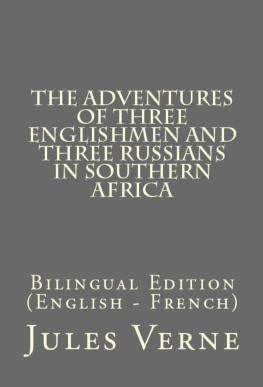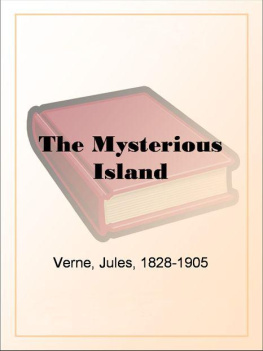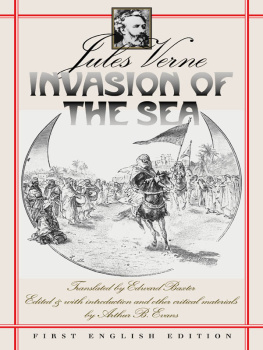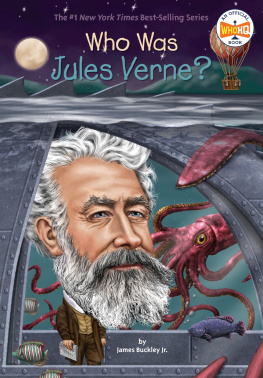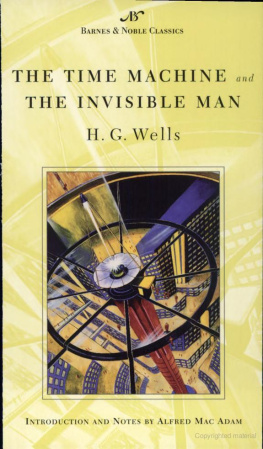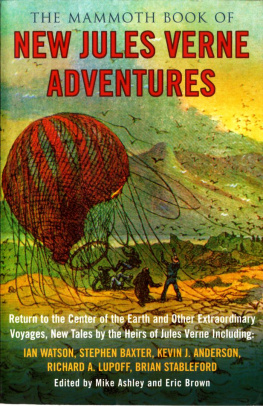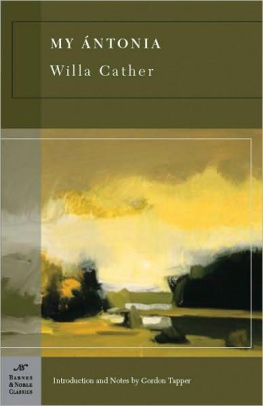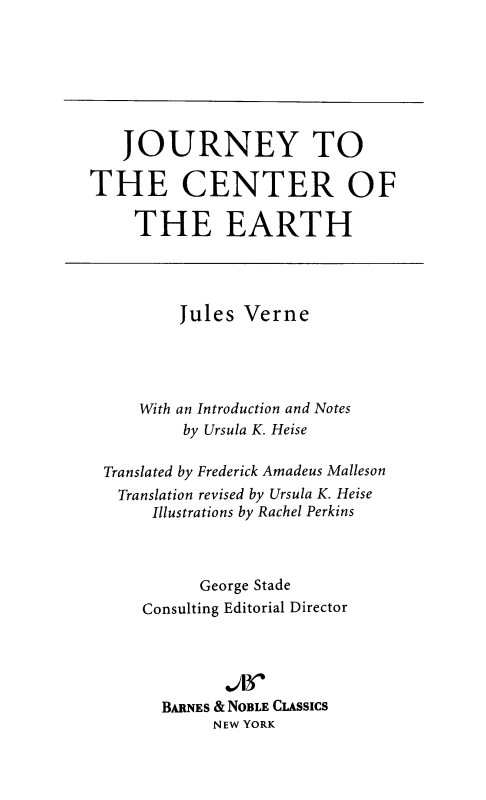
Table of Contents
From the Pages of
Journey to the Center of the Earth
Otto Lidenbrock had no mischief in him, I readily admit that; but unless he changes in unlikely ways, he will die a confirmed original. (page 3)
My uncle went on working, his imagination went off rambling into the ideal world of combinations; he lived far away from earth, and genuinely beyond earthly needs. (page 26)
All the theories of science demonstrate that such a feat is impossible! (page 32)
Large though it is, that asylum is not big enough to contain all Professor Lidenbrocks madness! (page 44)
We traveled around the enormous base of the volcano. The professor hardly took his eyes off it; he gesticulated, he seemed to challenge it and say: Heres the giant that Ill tame! (page 76)
The crater of Snaefells resembled an inverted cone, whose opening might have been half a league in diameter. Its depth appeared to be about two thousand feet. Imagine the aspect of such a container when it filled with thunder and flames. The bottom of the funnel was about 250 feet in circumference, so that its rather gentle slopes allowed its lower brim to be reached without difficulty. Involuntarily I compared the whole crater to an enormous hollow grenade launcher, and the comparison frightened me. (page 89)
My hair stood on end with terror. The feeling of emptiness overcame me. I felt the center of gravity shifting in me, and vertigo rising up to my brain like drunkenness. There is nothing more treacherous than this attraction toward the abyss. (page 94)
To Hell with your calculations! replied my uncle in a fit of rage. To Hell with your hypotheses! (page 131)
If the average number of difficulties did not increase, we could not fail to reach our goal. And then, what glory! I had come around to reasoning in this way, quite like a Lidenbrock. Seriously. Was this due to the strange environment in which I was living? Perhaps. (page 133)
Impossible to get away. The reptiles approach; they wheel around our little raft at a speed that express trains could not match; they swim concentric circles around it. Ive gripped my rifle. But what can a bullet do against the scales that cover the bodies of these animals? (page 168)
Ah! the descent of this electric sphere has magnetized all the iron on board; the instruments, the tools, the weapons, move about and clash with a sharp jangle; the nails in my shoes cling tenaciously to a plate of iron set into the wood. I cannot pull my foot away! (pages 180-181)
As long as the heart beats, as long as the flesh pulsates, I cant admit that any creature endowed with willpower needs to be overwhelmed by despair. (page 215)
Ah! What a journey! What a wonderful journey! Having entered through one volcano, we had exited through another, and that other one was more than twelve hundred leagues away from Snaefells, and from that barren landscape of Iceland at the edge of the world! (pages 228-229)
From that day on, the professor was the happiest of scholars, and I was the happiest of men, for my pretty Virland girl, resigning her place as ward, took up position in the house on the Knigstrasse in the double capacity of niece and wife. No need to add that her uncle was the illustrious Otto Lidenbrock, corresponding member of all the scientific, geographical, and mineralogical societies on the five continents of the earth. (page 232)
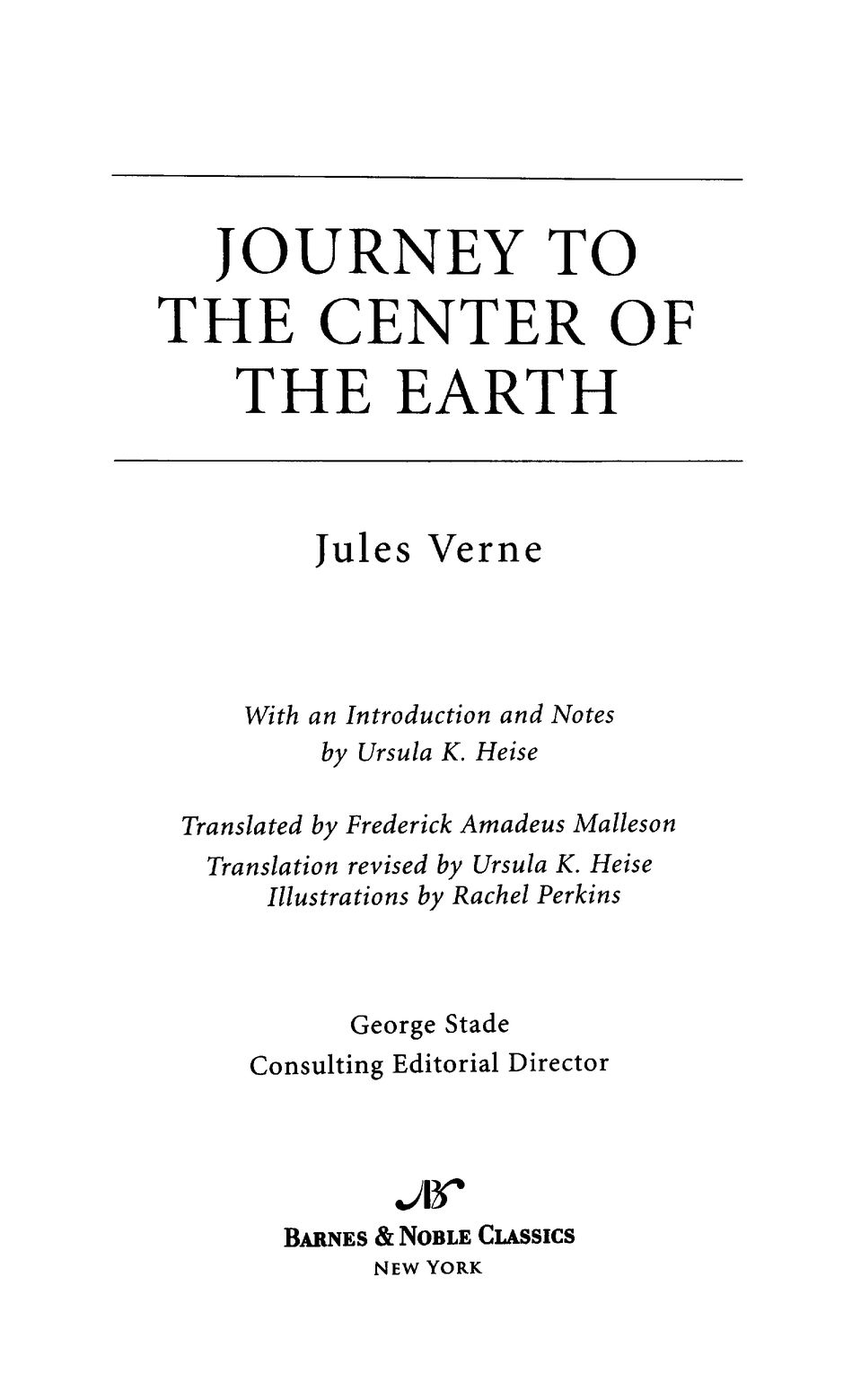
Jules Verne
The creator of the roman scientifique, the popular literary genre known today as science fiction, Jules Gabriel Verne was born in the port town of Nantes, France, in 1828. His father, Pierre, was a prominent lawyer, and his mother, Sophie, was from a successful ship-building family. Despite his fathers wish that he pursue law, young Jules was fascinated by the sea and all things foreign and adventurous. Legend holds that at age eleven he ran away from school to work aboard a ship bound for the West Indies but was caught by his father shortly after leaving port.
Jules developed an abiding love of science and language from a young age. He studied geology, Latin, and Greek in secondary school, and frequently visited factories, where he observed the workings of industrial machines. These visits likely inspired his desire for scientific plausibility in his writing and perhaps informed his depictions of the submarine Nautilus and the other seemingly fantastical inventions he described.
After completing secondary school, Jules studied law in Paris, as his father had before him. However, during the two years he spent earning his degree, he developed more consuming interests. Through family connections, he entered Parisian literary circles and met many of the distinguished writers of the day. Inspired in particular by novelists Victor Hugo and Alexandre Dumas (father and son), Verne began writing his own works. His poetry, plays, and short fiction achieved moderate success, and in 1852 he became secretary of the Theatre lyrique. dow with two
In 1857 he married Honorine Morel, a young widow with two children. Seeking greater financial security, he took a position as a stockbroker with the Paris firm Eggly and Company. However, he reserved his mornings for writing. Baudelaires recently published French translation of the works of Edgar Allan Poe, as well as the days Verne spent researching points of science in the library, inspired him to write a new sort of novel: the roman scientifique. His first such novel, Five Weeks in a Balloon, was an immediate success and earned him a publishing contract with the important editor Pierre-Jules Hetzel.
For the rest of his life, Verne published an average of two novels a year; the fifty-four volumes published during his lifetime, collectively known as Voyages Extraordinaires, include his best-known works, Journey to the Center of the Earth, Around the World in Eighty Days, and Twenty Thousand Leagues Under the Sea.
In 1872 Verne settled in Amiens with his family. During the next several years he traveled extensively on his yachts, visiting such locales as North Africa, Gibraltar, Scotland, and Ireland. In 1886 Vernes mentally ill nephew shot him in the leg, and the author was lame thereafter. This incident, as well as the tumultuous political climate in Europe, marked a change in Vernes perspective on science, exploration, and industry. Although not as popular as his early novels, Vernes later works are in many ways as prescient. Touching on such subjects as the ill effects of the oil industry, the negative influence of missionaries in the South Seas, and the extinction of animal species, they speak to concerns that remain urgent in our own time.
Verne continued writing actively throughout his life, despite failing health, the loss of family members, and financial troubles. At his death in 1905 his desk drawers contained the manuscripts of several new novels. Jules Verne is buried in the Madeleine Cemetery in Amiens.
The World of Jules Verne andJourney to the Center of the Earth
| 1828 | Jules Gabriel Verne is born in the port city of Nantes, France, the first of the five children who will be born to Pierre and Sophie Allotte Verne. His father, an attorney, will encourage young Jules to pursue a career in law. His mother, from a ship-building family, instills in him a love of the sea. |





